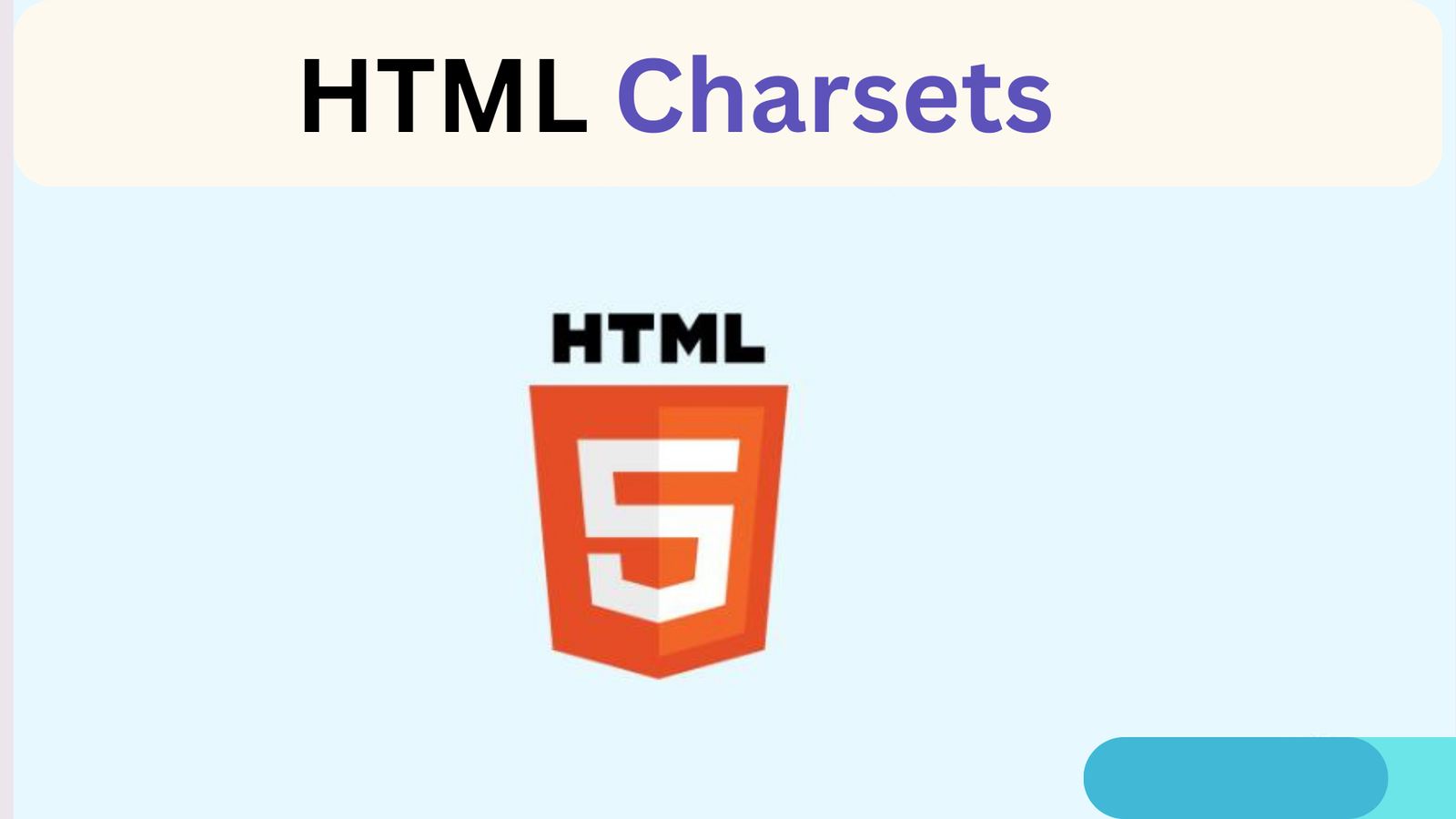HTML Tutorial
- HTML HOME
- HTML Introduction
- HTML Editors
- HTML Basics
- HTML Comments
- HTML Elements
- HTML Attributes
- HTML Headings
- HTML Paragraphs
- HTML Styles
- HTML Text Formatting
- HTML Quotations
- HTML Colors
- HTML Links
- HTML Images
- HTML Favicons: How to Add and Optimize for All Browsers
- HTML Page Title: How to Optimize Titles for SEO Success
- HTML Tables: Create & Optimize for Better Web Design | Codeezy
- HTML Lists: Types, Examples & SEO Tips for Better Structure
- HTML Block and Inline Elements
- HTML Iframes
- HTML File Paths
- HTML Layout
- HTML Computer Code Elements
- HTML Semantics
- HTML5 Semantics
- HTML Entities
- HTML Symbols
- HTML Emojis
- HTML Charsets
HTML Charsets

HTML charsets (character sets) define the characters that can be displayed in web pages, enabling proper text encoding and ensuring that content is rendered correctly across different browsers and devices. A charset is essential for the accurate representation of special characters, symbols, and text in various languages.
Why HTML Charsets Matter
When a web page is loaded, the browser needs to know how to decode the text on the page. If the charset isn’t specified correctly, it can lead to garbled text or incorrect symbols being displayed. Using the correct charset is crucial for providing a consistent and user-friendly experience, especially in multilingual websites.
Commonly Used Charsets
- UTF-8: The most widely used charset on the web today, UTF-8 supports a vast range of characters from different languages, including special symbols, making it ideal for global web applications.
- ISO-8859-1: Also known as Latin-1, this charset is used for Western European languages but is less versatile than UTF-8.
Declaring a Charset in HTML
To declare a charset in HTML, the <meta> tag is used within the <head> section of the document. The most common charset declaration is for UTF-8, which is recommended for most web pages due to its compatibility and wide range of character support.
Example: Setting Charset to UTF-8
<!DOCTYPE html>
<html lang="en">
<head>
<meta charset="UTF-8">
<title>Codeezy - Understanding HTML Charsets</title>
</head>
<body>
<p>Welcome to Codeezy! Here we discuss various HTML topics.</p>
</body>
</html>
In this example, the <meta charset="UTF-8"> tag tells the browser to use the UTF-8 character set to display the content. This ensures that all text, including special characters and symbols, is rendered correctly.
Benefits of Using UTF-8
- Global Support: UTF-8 can represent characters from virtually all languages, making it a universal choice for websites targeting an international audience.
- Compactness: UTF-8 uses one byte for standard ASCII characters, making it efficient in terms of storage and transmission.
- Consistency: By using UTF-8, you reduce the risk of text encoding issues, ensuring consistent display of content across different browsers and devices.
Charset FAQs
What happens if I don’t specify a charset in my HTML document?
If a charset isn’t specified, the browser will guess the character encoding, which can lead to display issues. Always specify a charset to avoid problems.
Can I change the charset after a page has been loaded?
No, the charset must be specified at the start of the document in the <head> section. Changing it later won’t affect the already loaded content.
Is UTF-8 the best choice for all web pages?
For most cases, yes. UTF-8 is versatile, widely supported, and handles a vast array of characters, making it the best choice for almost all web pages.
How do I ensure my entire website uses UTF-8?
Ensure that every HTML document includes the <meta charset="UTF-8"> tag in the <head> section. Additionally, configure your server to serve all files as UTF-8 by setting the correct HTTP headers.
Conclusion
Choosing the right charset, particularly UTF-8, is essential for ensuring that your web content is displayed correctly across different platforms and languages. By understanding and correctly implementing HTML charsets, you can provide a better user experience and avoid common pitfalls related to text encoding.
Thank You for Visiting Codeezy.org!
We’re thrilled to have you as part of our coding community. Your engagement and support inspire us to continue providing high-quality resources and tools to enhance your web development journey. Whether you’re a beginner or an experienced coder, we hope you found valuable insights and tools here at Codeezy.
Stay connected for more tips, tutorials, and updates to help you code with ease. Thank you for choosing Codeezy.org—your growth as a developer is our motivation!
Happy coding!
